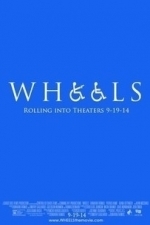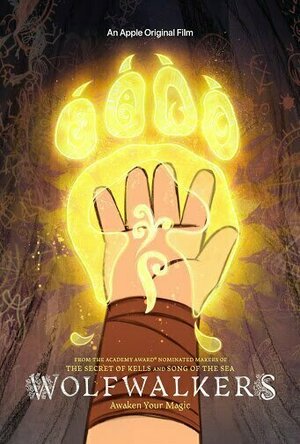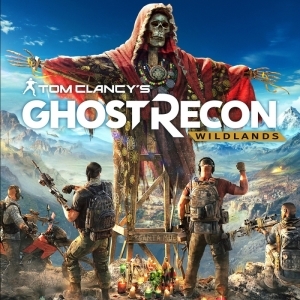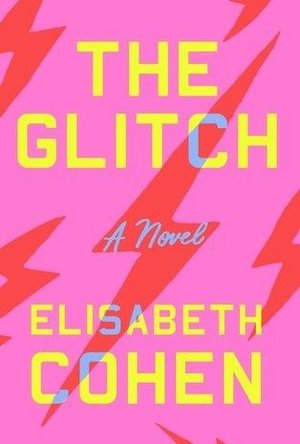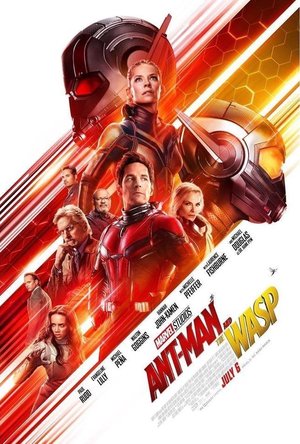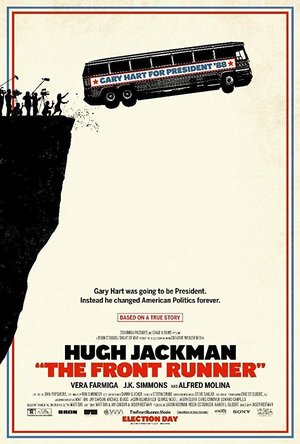Search

Madagascar Preschool Surf n Slide Free
Games and Education
App
***** #1 Ranked Educational Game in 55 Countries ***** “…it is worth purchasing. It’s one of...
Kirk Bage (1775 KP) rated Wheels (2014) in Movies
Mar 3, 2020 (Updated Mar 12, 2020)
According to the film’s IMDb page, this low budget indie production, filmed in Los Angeles is the greatest film of all time! A month ago it sat at 9.3, which is better than The Godfather and The Shawshank Redemption! As I am writing and compiling a book about the best 200 films of the 21st century, up to the end of 2019, I was obliged to check this out. With almost 18,000 votes to its name, there must be something in it being rated that highly, right?
Well, obviously not. Someone smart behind the film, listed variously as a 2014 or 2017 production, depending on where you look, had clearly gone out of their way to manipulate its online presence in the hope of gaining viewers. Look, it worked – I watched it, and now I’m writing about it. Pretty shameful really, as you find that almost no website has a bad review or rating for it out there; it has pretty much been scrubbed clean. How they did it, I do not know, but it is indefensible to be honest. The real shame being that it isn’t a bad film for the budget at all, and may have got more views and respect the old fashioned way.
The story revolves around a recently paralysed man becoming suicidal and finding another guy in a wheelchair to ask if he will blow his brains out with a gun. From there the two go on a rampage of drug addiction, self harm and anti-social misbehaviour. For every cliche in there, there is another moment which is quite well done, and although you can see the cracks here and there it is mostly a watchable and enjoyable film, with some laughs and some genuine emotion. Acting wise, the two leads (writer and co-director Donavon Warren and Patrick Hume) have their moments too; perhaps lacking anything hugely inciteful, but certainly competent enough to compare favourably to some higher profile movies.
Ultimately, it is merely fine. Not something you would recommend or especially remember, but not a complete waste of 2 hours either. It is clearly going for the idea that disabled people are helpless victims on its head, and does largely succeed in not condescending or amping up the pity. That doesn’t stop either of them being unlikable people, however – perhaps that is the point.
More interesting than the film by far is how these guys manipulated the publicity system to get it seen. So many films worth seeing drift into obscurity for lack of money, take the films of Shane Caruth, Primer and Upstream Color. Both incredible, original and intelligent movies that no one saw, and only word of mouth many years later puts them on anyone’s radar. Then there are the endless festival films that do the rounds and can’t pick up distribution, no matter how good. Perhaps a film like Wheels needs to employ these kind of tactics to survive. It is really a question of ethics. I have to say, as an honest reviewer, it does bother me that fake ratings and reviews can exist and slip under the wire. But maybe that is just me…?
Well, obviously not. Someone smart behind the film, listed variously as a 2014 or 2017 production, depending on where you look, had clearly gone out of their way to manipulate its online presence in the hope of gaining viewers. Look, it worked – I watched it, and now I’m writing about it. Pretty shameful really, as you find that almost no website has a bad review or rating for it out there; it has pretty much been scrubbed clean. How they did it, I do not know, but it is indefensible to be honest. The real shame being that it isn’t a bad film for the budget at all, and may have got more views and respect the old fashioned way.
The story revolves around a recently paralysed man becoming suicidal and finding another guy in a wheelchair to ask if he will blow his brains out with a gun. From there the two go on a rampage of drug addiction, self harm and anti-social misbehaviour. For every cliche in there, there is another moment which is quite well done, and although you can see the cracks here and there it is mostly a watchable and enjoyable film, with some laughs and some genuine emotion. Acting wise, the two leads (writer and co-director Donavon Warren and Patrick Hume) have their moments too; perhaps lacking anything hugely inciteful, but certainly competent enough to compare favourably to some higher profile movies.
Ultimately, it is merely fine. Not something you would recommend or especially remember, but not a complete waste of 2 hours either. It is clearly going for the idea that disabled people are helpless victims on its head, and does largely succeed in not condescending or amping up the pity. That doesn’t stop either of them being unlikable people, however – perhaps that is the point.
More interesting than the film by far is how these guys manipulated the publicity system to get it seen. So many films worth seeing drift into obscurity for lack of money, take the films of Shane Caruth, Primer and Upstream Color. Both incredible, original and intelligent movies that no one saw, and only word of mouth many years later puts them on anyone’s radar. Then there are the endless festival films that do the rounds and can’t pick up distribution, no matter how good. Perhaps a film like Wheels needs to employ these kind of tactics to survive. It is really a question of ethics. I have to say, as an honest reviewer, it does bother me that fake ratings and reviews can exist and slip under the wire. But maybe that is just me…?
Lee (2222 KP) rated Wolfwalkers (2020) in Movies
Oct 12, 2020
Wolfwalkers is the latest animated offering from Irish based studio, Cartoon Saloon. I’m actually ashamed to say that before watching Wolfwalkers, I was pretty unfamiliar with their previous Irish folklore offerings - The Secret of Kells (2009) and Song of the Sea (2014) - but having seen this latest animated feature, it’s a mistake that I will be looking to correct as quickly as possible.
Wolfwalkers is set in Kilkenny, Ireland (which is also the home of Cartoon Saloon!) during the 17th century. Robyn (Honor Kneafsey) has moved from Yorkshire with her father, Bill (Sean Bean) to the walled town, where Bill has been tasked by the rather menacing Lord Protector (Simon McBurney) to clear the surrounding forest of wolves. Once the forest is clear, the woodsmen can fell the trees and the farmers can start working the land.
There are signs everywhere, throughout the town and pinned to trees in the forest, showing a snarling wolf with a red cross drawn over it. A wolf attack on some woodsmen early on shows us just how dangerous the wolves are, and also introduces us to the Wolfwalkers that walk among them. With blazing eyes and fiery red hair, the Wolfwalkers are able to communicate with and control the wolves, calling them off their attacks on the humans. They also appear to possess magical healing abilities, using them to heal a wolf scratch on the chest of one of the men.
Robyn has dreams of following in her father’s footsteps and becoming a hunter as she practices her crossbow skills. So rather than work all day in the scullery, she decides to slip past the guards at the outer gate (no children are allowed beyond the town walls) and secretly follow her father out into the forest, watching him as he sets traps for the wolves. When she comes face to face with a wolf, it’s much smaller and a lot cuter than the ones we’ve seen before, and Robyn learns that it is, in fact, a young Wolfwalker named Mebh.
Robyn forms a bond with Mebh and discovers that when the Wolfwalkers sleep, they assume the body of a wolf, leaving their human body to sleep until they return in order to wake it up. Mebh is worried because her mother has been asleep for some time and her wolf form has not yet returned. Robyn learns that the Wolfwalkers are simply trying to defend the animals from the modern world that is encroaching on their forest and Robyn vows to help find her mother. A difficult task when the Lord Protector has given her father 2 days to clear the forest of wolves, and he isn’t listening to his daughter as she pleads with him to stop.
I found Wolfwalkers to be simply wonderful, with a captivating story full of twist and turns for both kids and adults to enjoy. It’s beautiful to look at too, utilising a watercolour style with rough pencil sketches visible in most of the characters and scenery only adding to its visual appeal. I was completely taken by surprise and just couldn’t fault it.
Wolfwalkers is set in Kilkenny, Ireland (which is also the home of Cartoon Saloon!) during the 17th century. Robyn (Honor Kneafsey) has moved from Yorkshire with her father, Bill (Sean Bean) to the walled town, where Bill has been tasked by the rather menacing Lord Protector (Simon McBurney) to clear the surrounding forest of wolves. Once the forest is clear, the woodsmen can fell the trees and the farmers can start working the land.
There are signs everywhere, throughout the town and pinned to trees in the forest, showing a snarling wolf with a red cross drawn over it. A wolf attack on some woodsmen early on shows us just how dangerous the wolves are, and also introduces us to the Wolfwalkers that walk among them. With blazing eyes and fiery red hair, the Wolfwalkers are able to communicate with and control the wolves, calling them off their attacks on the humans. They also appear to possess magical healing abilities, using them to heal a wolf scratch on the chest of one of the men.
Robyn has dreams of following in her father’s footsteps and becoming a hunter as she practices her crossbow skills. So rather than work all day in the scullery, she decides to slip past the guards at the outer gate (no children are allowed beyond the town walls) and secretly follow her father out into the forest, watching him as he sets traps for the wolves. When she comes face to face with a wolf, it’s much smaller and a lot cuter than the ones we’ve seen before, and Robyn learns that it is, in fact, a young Wolfwalker named Mebh.
Robyn forms a bond with Mebh and discovers that when the Wolfwalkers sleep, they assume the body of a wolf, leaving their human body to sleep until they return in order to wake it up. Mebh is worried because her mother has been asleep for some time and her wolf form has not yet returned. Robyn learns that the Wolfwalkers are simply trying to defend the animals from the modern world that is encroaching on their forest and Robyn vows to help find her mother. A difficult task when the Lord Protector has given her father 2 days to clear the forest of wolves, and he isn’t listening to his daughter as she pleads with him to stop.
I found Wolfwalkers to be simply wonderful, with a captivating story full of twist and turns for both kids and adults to enjoy. It’s beautiful to look at too, utilising a watercolour style with rough pencil sketches visible in most of the characters and scenery only adding to its visual appeal. I was completely taken by surprise and just couldn’t fault it.
Gareth von Kallenbach (980 KP) rated the PlayStation 4 version of Tom Clancy's Ghost Recon Wildlands in Video Games
Jun 19, 2019
The latest game in the Ghost Recon series takes players on a wild adventure across Bolivia as a member of an elite CIA unit tasked with bringing down the Santa Blanca Cartel.
Tom Clancy’s Ghost Recon Wildlands gives players a very large and diverse open world in which to operate and numerous vehicles in which to move through the massive and highly-detailed gaming maps.
Players start off by customizing their character and they can play with up to three real players or a mix of AI or humans. Missions are available via a map and contain story and side missions which grow as players progress through the game.
A typical mission may entail stopping a convoy, eliminating a target of interest, obtaining information, or disrupting operations for the Cartel.
Players can walk, fly, sail, or drive to the locales as the various provinces of the game are stocked with vehicles. There are also plenty of dangers along the way as random checkpoints, patrols, and other dangers lurk. The Cartel is not the only danger facing players as the local military or Unidad is in the pockets of the Cartel and they have an abundance of gunships, armored vehicles, and well-armed troops to bring to the fight.
The game does lead best to a more stealthy approach but at times run and gun can be effective if you are smart. I have taken at times to blowing up Propane and other explosives to create diversions while members of my team slip in and complete mission objectives.
>
Wildlands also has plenty of side content such as the conversations between the main characters and the constant presence of the Cartel DJ on the radio. While this is a great addition to the game, hearing the same lines repeated the more you play the game can get old.
The graphics and detail level of the game are solid as I really enjoyed the diverse topography of the landscape. From snow covered mountains to rugged jungles and forest, the game offers plenty to look at, and while driving or flying, it is great fun to get caught up in.
Wildlands also has a great day and night cycle as well as dynamic weather as being caught in the rain makes handling vehicles harder and can slow your approach on a target locale. The game has a very deep menu of weapons, skills, and gear that are available and unlock as players gather Skill Points along the way. I recently upgraded my spy drone to have an explosive so I could fly it into an enemy area to scout the locale, and then deliver a nice surprise when needed.
There are some issues that arise from time to time such as clipping issues where a player will merge with a wall or steps and lag can arise with the graphics even when playing on an I7 system with an NVIDIA 1060 Founders Edition card. This was not as common playing on a Playstation 4 Pro system.
The biggest fault I have with Wildlands is the amount of repetition that comes up. I have played the early access and beta versions of the game as well as the launch version and I still keep playing various missions over and over. While I am free to play on my own with AI characters, the most enjoyable way to play for me is with other players, and as such I find myself often playing missions over and over even though I select the option to continue my story. Like Tom Clancy’s The Division, Wildlands offers a very large and immersive world filled with options for players and plenty of customization. The game also offers great replay value as even when the core story mode is completed, there are numerous side missions for players to play and more content is on the way.
If you want a good challenge and a game that will offer you countless hours of solid gameplay and replay value, you will not want to miss this one.
http://sknr.net/2017/03/27/tom-clancys-ghost-recon-wildlands/
Tom Clancy’s Ghost Recon Wildlands gives players a very large and diverse open world in which to operate and numerous vehicles in which to move through the massive and highly-detailed gaming maps.
Players start off by customizing their character and they can play with up to three real players or a mix of AI or humans. Missions are available via a map and contain story and side missions which grow as players progress through the game.
A typical mission may entail stopping a convoy, eliminating a target of interest, obtaining information, or disrupting operations for the Cartel.
Players can walk, fly, sail, or drive to the locales as the various provinces of the game are stocked with vehicles. There are also plenty of dangers along the way as random checkpoints, patrols, and other dangers lurk. The Cartel is not the only danger facing players as the local military or Unidad is in the pockets of the Cartel and they have an abundance of gunships, armored vehicles, and well-armed troops to bring to the fight.
The game does lead best to a more stealthy approach but at times run and gun can be effective if you are smart. I have taken at times to blowing up Propane and other explosives to create diversions while members of my team slip in and complete mission objectives.
>
Wildlands also has plenty of side content such as the conversations between the main characters and the constant presence of the Cartel DJ on the radio. While this is a great addition to the game, hearing the same lines repeated the more you play the game can get old.
The graphics and detail level of the game are solid as I really enjoyed the diverse topography of the landscape. From snow covered mountains to rugged jungles and forest, the game offers plenty to look at, and while driving or flying, it is great fun to get caught up in.
Wildlands also has a great day and night cycle as well as dynamic weather as being caught in the rain makes handling vehicles harder and can slow your approach on a target locale. The game has a very deep menu of weapons, skills, and gear that are available and unlock as players gather Skill Points along the way. I recently upgraded my spy drone to have an explosive so I could fly it into an enemy area to scout the locale, and then deliver a nice surprise when needed.
There are some issues that arise from time to time such as clipping issues where a player will merge with a wall or steps and lag can arise with the graphics even when playing on an I7 system with an NVIDIA 1060 Founders Edition card. This was not as common playing on a Playstation 4 Pro system.
The biggest fault I have with Wildlands is the amount of repetition that comes up. I have played the early access and beta versions of the game as well as the launch version and I still keep playing various missions over and over. While I am free to play on my own with AI characters, the most enjoyable way to play for me is with other players, and as such I find myself often playing missions over and over even though I select the option to continue my story. Like Tom Clancy’s The Division, Wildlands offers a very large and immersive world filled with options for players and plenty of customization. The game also offers great replay value as even when the core story mode is completed, there are numerous side missions for players to play and more content is on the way.
If you want a good challenge and a game that will offer you countless hours of solid gameplay and replay value, you will not want to miss this one.
http://sknr.net/2017/03/27/tom-clancys-ghost-recon-wildlands/
Bookapotamus (289 KP) rated The Glitch in Books
May 31, 2018
Not worth the hype
So, when I first heard about The Glitch, I was all like - Wow. What cool idea for a story! This is going to be awesome. I need to get my hands on this one! And then I read it, and I was all like - WTF did I just read? Did someone slip me drugs? Did I miss something?
Shelley is like one of those Steve Jobs-esque corporate tech CEO robots who is basically all work and zero play. Her company is called Conch, and is sort of like a Siri for everyday life that clips onto your ear. Even Steve jobs seems like a wuss compared to Shelley. She's stiff, and brusque and her marriage and friendships are more of business arrangements it seems, as well as having children (Nova and Blazer?!? ummm what?), she has ZERO social life - and she likes it all this way. In fact she thrives on it.
The story starts out with Nova going missing on the beach and her and her husband CASUALLY STROLL around on the beach looking for her while they are both ON THE PHONE taking conference calls. I cannot even believe people like this might exist. Then a "glitch" happens with the Conch product and weirdness ensues. I'm all for weird books. I don't base a books review on unlikeable characters. In fact Shelley is written PERFECTLY. Elisabeth Cohen is apparently a technical writer by trade and she shines at developing Shelley as a character. Her writing is SO smart, and sharp and I LOVE the way she writes. I'm giving a slight pass since it's her first novel because the words are there - and they are exquisite! They just need some finesse in arranging the story better. But the themes here all ALL over the place. Kidnapping? Corporate espionage? Time travel? Lightning? Weird romantic feeling for coworkers and nannies? Women's empowerment? Technology? Work/Life/Mom balance? I had enough trouble with being in Shelley's head with her ramblings and descriptions - thoroughly written, and passionately descriptive - but the story itself just fell flat.
And the ending, just really unsatisfying. And a bit unbelievable knowing how hardcore Shelley was about most things - It was like she just conceded and gave up? Which seemed so out of character.. There were several times I was like "No WAY this type A personality would let this chick in her house!" and "Why isn't she calling the cops!" It was like you knew so precisely who Shelley was by the incredible character development of how robotic and precise her actions would be and then - what? Huh? What just happened? I'm still just really confused.
I hate when this happens. I find out about a book that sounds so ridiculously awesome that i rush out to find it wherever I can immediately. The description when I first heard of the book had a question in it like "What would you do if you met your younger self?" I want to read THAT book. That's what I thought I was reading and where it was going, but it turned into this whole other story that went somewhere else entirely. There was so much promise and potential and I'm pretty bummed. It wasn't worth all the hype I've been hearing.
Shelley is like one of those Steve Jobs-esque corporate tech CEO robots who is basically all work and zero play. Her company is called Conch, and is sort of like a Siri for everyday life that clips onto your ear. Even Steve jobs seems like a wuss compared to Shelley. She's stiff, and brusque and her marriage and friendships are more of business arrangements it seems, as well as having children (Nova and Blazer?!? ummm what?), she has ZERO social life - and she likes it all this way. In fact she thrives on it.
The story starts out with Nova going missing on the beach and her and her husband CASUALLY STROLL around on the beach looking for her while they are both ON THE PHONE taking conference calls. I cannot even believe people like this might exist. Then a "glitch" happens with the Conch product and weirdness ensues. I'm all for weird books. I don't base a books review on unlikeable characters. In fact Shelley is written PERFECTLY. Elisabeth Cohen is apparently a technical writer by trade and she shines at developing Shelley as a character. Her writing is SO smart, and sharp and I LOVE the way she writes. I'm giving a slight pass since it's her first novel because the words are there - and they are exquisite! They just need some finesse in arranging the story better. But the themes here all ALL over the place. Kidnapping? Corporate espionage? Time travel? Lightning? Weird romantic feeling for coworkers and nannies? Women's empowerment? Technology? Work/Life/Mom balance? I had enough trouble with being in Shelley's head with her ramblings and descriptions - thoroughly written, and passionately descriptive - but the story itself just fell flat.
And the ending, just really unsatisfying. And a bit unbelievable knowing how hardcore Shelley was about most things - It was like she just conceded and gave up? Which seemed so out of character.. There were several times I was like "No WAY this type A personality would let this chick in her house!" and "Why isn't she calling the cops!" It was like you knew so precisely who Shelley was by the incredible character development of how robotic and precise her actions would be and then - what? Huh? What just happened? I'm still just really confused.
I hate when this happens. I find out about a book that sounds so ridiculously awesome that i rush out to find it wherever I can immediately. The description when I first heard of the book had a question in it like "What would you do if you met your younger self?" I want to read THAT book. That's what I thought I was reading and where it was going, but it turned into this whole other story that went somewhere else entirely. There was so much promise and potential and I'm pretty bummed. It wasn't worth all the hype I've been hearing.
Gareth von Kallenbach (980 KP) rated Ant-Man and the Wasp (2018) in Movies
Jun 19, 2019
Following the unexpected and shocking moments from “Avengers: Infinity War”, fans eagerly awaited the next Marvel Studios film for any type of clues as to what will happen next when the next Avengers film arrives next summer. “Ant-Man and the Wasp”, is set before the events of “Avengers: Infinity War”, and finds Scott Lang (Paul Rudd) under home confinement thanks to a plea deal he took for siding with Captain America in “Captain America: Civil War”.
The years of being at home have driven Scott to find creative ways to entertain himself when his friend Luis (Michael Pena) and his daughter Cassie are not around. Scott is nearing the end of his isolation but knows F.B.I. Agent Woo (Randall Park), is waiting for him to slip up and with a possible twenty year prison term in the balance, he is not eager to make any mistakes.
Scott is also on the outs with Hope (Evangeline Lilly) and her father Hank (Michael Douglas) as it is revealed he took the Ant-Man suit and took part in the Civil War without their permission.
Fate intervenes when a strange dream causes Scott to contact Hope who in turn takes a reluctant Scott along with her to get to the bottom of the dream. Scott is naturally reluctant as he is days away from freedom and being discovered out and about and consorting with his wanted former associates would not be good for his eventual freedom.
A shady tech dealer named Sonny Burch (Walton Goggins) and a dangerous new adversary named “Ghost” (Hannah John-Kamen) also complicate matters and force Scott, Hope, and Hank to contend with issues all around them as the race against time on an urgent mission while trying to stay away from Woo and his team.
The film is a bit slow getting started but it does have some great character moments as well as humor around the build-up to the action sequences. The action when it comes mixes some great visual FX with some humor as Hope and Scott jump between everyday items at various sizes to face the threats presented to them. The cast works very well with one another and there are some great moments that will likely become favorites for fans of the characters and Marvel.
The Ghost is a rather interesting choice as an adversary as we do not have an individual bent on conquest, revenge, mass destruction, or accumulating power and wealth. While it may seem odd to have a more down to earth and relatable villain in a Marvel film, it does continue a recent trend of showing of adversaries who are complex, harder to define, and sympathetic much like The Winter Soldier.
There are two scenes in the credits which are very important to the continuity of the Marvel Universe and with “Captain Marvel” due in March 2019, it will likely get fans whipped into overdrive thinking about the possibilities they present.
“Ant-Man and the Wasp” is not as epic in scale as some of the past Marvel films, but thanks to a likeable cast and some timely humor, it should keep fans happy until the next chapter in the series.
http://sknr.net/2018/06/27/ant-man-and-the-wasp/
The years of being at home have driven Scott to find creative ways to entertain himself when his friend Luis (Michael Pena) and his daughter Cassie are not around. Scott is nearing the end of his isolation but knows F.B.I. Agent Woo (Randall Park), is waiting for him to slip up and with a possible twenty year prison term in the balance, he is not eager to make any mistakes.
Scott is also on the outs with Hope (Evangeline Lilly) and her father Hank (Michael Douglas) as it is revealed he took the Ant-Man suit and took part in the Civil War without their permission.
Fate intervenes when a strange dream causes Scott to contact Hope who in turn takes a reluctant Scott along with her to get to the bottom of the dream. Scott is naturally reluctant as he is days away from freedom and being discovered out and about and consorting with his wanted former associates would not be good for his eventual freedom.
A shady tech dealer named Sonny Burch (Walton Goggins) and a dangerous new adversary named “Ghost” (Hannah John-Kamen) also complicate matters and force Scott, Hope, and Hank to contend with issues all around them as the race against time on an urgent mission while trying to stay away from Woo and his team.
The film is a bit slow getting started but it does have some great character moments as well as humor around the build-up to the action sequences. The action when it comes mixes some great visual FX with some humor as Hope and Scott jump between everyday items at various sizes to face the threats presented to them. The cast works very well with one another and there are some great moments that will likely become favorites for fans of the characters and Marvel.
The Ghost is a rather interesting choice as an adversary as we do not have an individual bent on conquest, revenge, mass destruction, or accumulating power and wealth. While it may seem odd to have a more down to earth and relatable villain in a Marvel film, it does continue a recent trend of showing of adversaries who are complex, harder to define, and sympathetic much like The Winter Soldier.
There are two scenes in the credits which are very important to the continuity of the Marvel Universe and with “Captain Marvel” due in March 2019, it will likely get fans whipped into overdrive thinking about the possibilities they present.
“Ant-Man and the Wasp” is not as epic in scale as some of the past Marvel films, but thanks to a likeable cast and some timely humor, it should keep fans happy until the next chapter in the series.
http://sknr.net/2018/06/27/ant-man-and-the-wasp/
Gareth von Kallenbach (980 KP) rated The Front Runner (2018) in Movies
Jul 2, 2019
At the end of the 1984 Democratic Primaries a relative unknown Senator from Colorado, Gary Hart (Hugh Jackman), concedes victory to Walter Mondale. But being the runner up to the Democratic Party Presidential nominee catapults Hart to the national stage. Fast forward to 1988 and Hart is the overwhelming front runner to be not only the Democratic nominee but most likely the next President of the United States. He is a progressive and has a knack for explaining politics so that everyone can understand. He’s well spoken, has popular policies, a clear message for the future and is a handsome man to boot. It seems like nothing can stand in his way. That is until three weeks into the primary elections reporters from the Miami Herald, Tom Fiedler (Steve Zissis) and Pete Murphy (Bill Burr), get wind of a story of Hart and a young woman from Miami spending time together at yacht party. Since Hart is very much married to his wife, Lee Hart (Vera Farmiga), they decide to investigate. They find out that the two may be meeting in Washington D.C. at Hart’s townhouse. They follow the young woman, Donna Rice (Sara Paxton), from Miami to D.C. There they take photos of the two together and print a story. The media blitz is on and the story explodes. Hart now faces one of the first personal political scandals. He must try and navigate a new media age to not see his political career slip away.
Even though this is a true story and some of you may already know the facts I will put the disclaimer of spoilers ahead. This is the story of Senator Hart and his fall from grace as a sure fire Presidential Nominee to out of politics in the blink of an eye, in one of the first “tabloid” political scandals. The Jason Reitman (Up in the Air, Thank you for Smoking) directed film focuses heavily on the interaction between politicians and reporters. It shows, and touches on, how this relationship evolves/devolves so quickly. There are plenty of moments that you can tie into today’s media and how maybe this instance influenced how the media reported on the private lives of politicians.
Overall I thought the film was good. I thought that telling the story from the side of the media and the people on the campaign was really interesting. I just thought that it was not overly compelling. You can’t feel bad for Hart because it was his actions and how he handled the situation that led to the eventual result. Also yeah the media maybe went too far at some point but also you could see how the reporters were just trying to do their jobs. The film has a large ensemble cast. J.K Simmons, Molly Ephraim, Chris Coy, Alfred Molina, Kevin Pollak, Mamoudou Athie and the list goes on. They all do okay but really this is all about Jackman. His performance is outstanding. The story did drag a little at points but for a political drama it was not overboard. I think it could have been a little shorter.
To use a real story that had such a media spotlight on it was ambitious and I give the filmmakers credit for that. But you can see some of the limitation on screen. Not really a theater must see but definitely if this is a story you are not familiar with it is worth the watch. Again it draws a lot of parallels and makes a lot of nods to today’s media and political climate.
Even though this is a true story and some of you may already know the facts I will put the disclaimer of spoilers ahead. This is the story of Senator Hart and his fall from grace as a sure fire Presidential Nominee to out of politics in the blink of an eye, in one of the first “tabloid” political scandals. The Jason Reitman (Up in the Air, Thank you for Smoking) directed film focuses heavily on the interaction between politicians and reporters. It shows, and touches on, how this relationship evolves/devolves so quickly. There are plenty of moments that you can tie into today’s media and how maybe this instance influenced how the media reported on the private lives of politicians.
Overall I thought the film was good. I thought that telling the story from the side of the media and the people on the campaign was really interesting. I just thought that it was not overly compelling. You can’t feel bad for Hart because it was his actions and how he handled the situation that led to the eventual result. Also yeah the media maybe went too far at some point but also you could see how the reporters were just trying to do their jobs. The film has a large ensemble cast. J.K Simmons, Molly Ephraim, Chris Coy, Alfred Molina, Kevin Pollak, Mamoudou Athie and the list goes on. They all do okay but really this is all about Jackman. His performance is outstanding. The story did drag a little at points but for a political drama it was not overboard. I think it could have been a little shorter.
To use a real story that had such a media spotlight on it was ambitious and I give the filmmakers credit for that. But you can see some of the limitation on screen. Not really a theater must see but definitely if this is a story you are not familiar with it is worth the watch. Again it draws a lot of parallels and makes a lot of nods to today’s media and political climate.
Sophia (Bookwyrming Thoughts) (530 KP) rated Knight Assassin in Books
Jan 23, 2020
Am I alone to say that this sort of felt like history + Downton Abbey + a little Arabian mythology? Perhaps it's the royal technicalities that make me think of Downton Abbey with its lords and ladies, despite the fact the book seems to be set around the Crusades and everyone seemed to be fighting over the Holy Land.
I was actually a bit reluctant to accept Knight Assassin for review for a few reasons:
1. It didn't sound very appealing A girl's mother gets murdered and she wants revenge. Then she meets a guy from her past who actually ends up being her enemy. Nope... not really for me, though the last part is semi-intriguing.
2. I don't know that much about the Knights Templar. I don't even remember that one book I read and it was nominated for a state award once.
3. I had a pretty big review pile already
However, as I got started, I realized I was underestimating, and I actually enjoyed it in most cases. But what really started to get the ball rolling?
Zayn's mother gets accused of witchcraft and burned to death.
I know it sounds really mean and really odd of me that it would catch my attention. But think about it. If that happened to me (or any of us really), I would be looking for revenge as well after I get over my initial shock, which could last for who knows how long.
Zayn gah, I keep putting an e at the end. One Direction, this is not the time to slip into a review is probably by far one of the strongest heroines I've read about. She goes through so many trials throughout the book from her mother's murder to rape to finding out what she really is and hasn't broken down for most of the book. Definitely shorter than me, but Zayn seems to be pretty impulsive for a good half of the book.
For the first half, there's a lot of flashbacks throughout the beginning to Zayn's childhood, in which I sort of found pointless. I'm not exactly sure what the connection really is, aside from how she meets Guy de Molay and Earic Goodwin. It's not until the second half where the interesting stuff happens and there's not as many flashbacks, but the first half by all means isn't boring at all. I find that Zayn has a lot of backstory, which frankly makes her less of a pancake (flat characters).
The ending though, felt like a stand alone, but it didn't feel like a stand alone. I'm surprised this isn't a series to be honest. However, if you're the type who enjoys reading a bit of history and a little mythology, perhaps you should consider Knight Assassin. It's a nice change from other genres (particularly aliens and angels at the moment) as there aren't many books set in the late 1100s.
<b>Random Thought:</b>
<blockquote>I will never recover my male ego, so long as Zayn is around to humble me.</blockquote>
Perhaps where there's a Carter, Jace, Daemon or a Herondale, there needs to be a Zayn. She might be able to keep their ego in check... well, particularly the third one. ;)
--------------------
Original Rating: 4.5 out of 5 Owls
Advance review copy provided by publisher for review
This review and more can be found at <a href="http://bookwyrming-thoughts.blogspot.com/2014/03/arc-review-knight-assassin-by-rima-jean.html">Bookwyrming Thoughts</a>
<a href="http://bookwyrming-thoughts.blogspot.com/"><img src="http://4.bp.blogspot.com/-Gi5Rk5yLloA/UtliaUbdL3I/AAAAAAAACbE/J27z92_qrYU/s1600/Official+Banner.png"; /></a>
I was actually a bit reluctant to accept Knight Assassin for review for a few reasons:
1. It didn't sound very appealing A girl's mother gets murdered and she wants revenge. Then she meets a guy from her past who actually ends up being her enemy. Nope... not really for me, though the last part is semi-intriguing.
2. I don't know that much about the Knights Templar. I don't even remember that one book I read and it was nominated for a state award once.
3. I had a pretty big review pile already
However, as I got started, I realized I was underestimating, and I actually enjoyed it in most cases. But what really started to get the ball rolling?
Zayn's mother gets accused of witchcraft and burned to death.
I know it sounds really mean and really odd of me that it would catch my attention. But think about it. If that happened to me (or any of us really), I would be looking for revenge as well after I get over my initial shock, which could last for who knows how long.
Zayn gah, I keep putting an e at the end. One Direction, this is not the time to slip into a review is probably by far one of the strongest heroines I've read about. She goes through so many trials throughout the book from her mother's murder to rape to finding out what she really is and hasn't broken down for most of the book. Definitely shorter than me, but Zayn seems to be pretty impulsive for a good half of the book.
For the first half, there's a lot of flashbacks throughout the beginning to Zayn's childhood, in which I sort of found pointless. I'm not exactly sure what the connection really is, aside from how she meets Guy de Molay and Earic Goodwin. It's not until the second half where the interesting stuff happens and there's not as many flashbacks, but the first half by all means isn't boring at all. I find that Zayn has a lot of backstory, which frankly makes her less of a pancake (flat characters).
The ending though, felt like a stand alone, but it didn't feel like a stand alone. I'm surprised this isn't a series to be honest. However, if you're the type who enjoys reading a bit of history and a little mythology, perhaps you should consider Knight Assassin. It's a nice change from other genres (particularly aliens and angels at the moment) as there aren't many books set in the late 1100s.
<b>Random Thought:</b>
<blockquote>I will never recover my male ego, so long as Zayn is around to humble me.</blockquote>
Perhaps where there's a Carter, Jace, Daemon or a Herondale, there needs to be a Zayn. She might be able to keep their ego in check... well, particularly the third one. ;)
--------------------
Original Rating: 4.5 out of 5 Owls
Advance review copy provided by publisher for review
This review and more can be found at <a href="http://bookwyrming-thoughts.blogspot.com/2014/03/arc-review-knight-assassin-by-rima-jean.html">Bookwyrming Thoughts</a>
<a href="http://bookwyrming-thoughts.blogspot.com/"><img src="http://4.bp.blogspot.com/-Gi5Rk5yLloA/UtliaUbdL3I/AAAAAAAACbE/J27z92_qrYU/s1600/Official+Banner.png"; /></a>

My Pain Diary & Symptom Tracker: Gold Edition
Medical and Health & Fitness
App
This is the successor the the popular, award-winning, best selling, doctor recommended pain tracking...
